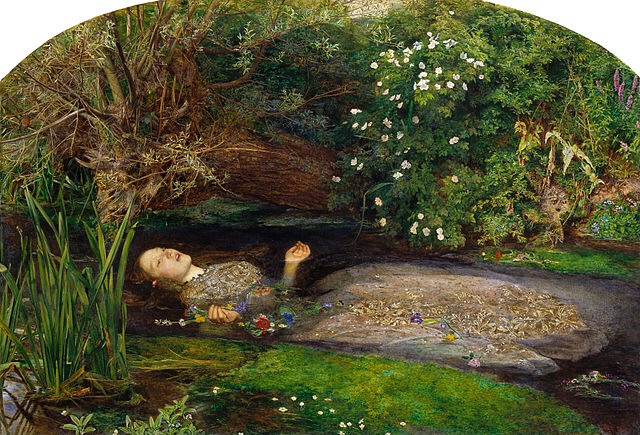Two hundred and three years ago with Xmas approaching the town of Manchester was rocked by the disappearance of an engaged twenty year old.About Manchester recounts the tale of Manchester’s Orphilia.
Twenty year old Lavinia, disappeared on the night of the sixteenth December 1816.The daughter of a wire- worker, William Robinson, she was engaged to a surgeon named Holroyd (or Oldroyd), a man- midwife at the Lying-in Hospital.
Lavinia vanished following a rumoured ‘lover’s tiff’ with her fiancé but despite extensive searches no trace of her could be found.
A month later, she was still missing and rewards to the value of £100 were offered for information concerning her whereabouts but none was forthcoming.The winter of 1813 was particularly severe. The River Irwell had frozen over and remained frozen until on seventh February, Lavinia’s body was found by a Mr. Goodier of Eccles, who owned a mill near Mode Wheel.
The frozen river had thawed and had revealed Lavinia’s body, which had been perfectly preserved in the ice.
Because of the nature of her reappearance, Lavinia soon acquired the soubriquet ‘The Manchester Ophelia’. She was buried in her family’s grave at St. John’s , hundreds of people attended the funeral.
Some of the witnesses at the subsequent inquest said that they had seen a couple, believed to be Holroyd and Lavinia, arguing violently.
Some claimed to have seen the man strike the woman but there was insufficient evidence for the coroner to record anything other than an open verdict. While there were suspicions of foul play, there is a more plausible argument that Lavinia took her own life.
The family’s advertisements offering the reward mention the discovery of a note in her handwriting ‘…from which’ says the advertisement ‘there is reason to fear she is not living’.
The note strongly suggests that Lavinia committed suicide. It read: ‘With my dying breath I attest myself innocent of the crime laid to my charge! Adieu! God bless you all! I cannot outlive his suspicion!’
A somewhat dramatised account, which appears in ‘The Dark River’ by Cyril Bracegirdle published almost one hundred years later suggested that she had been accused by Holroyd of a continued association with a former boyfriend.
Although no charges were laid against Holroyd, there were many who thought him guilty either of her murder or of making unfounded allegations concerning her chastity, which had driven her to take her own life.
Holroyd’s house in Bridge Street was attacked by mobs on a number of occasions until the continuing demonstrations finally forced him to leave town. One newspaper account suggested that he had committed suicide at Wolverhampton some months later, but there were also reports that he had established a practice as a surgeon in his native village of Middlestown near Wakefield in Yorkshire.







